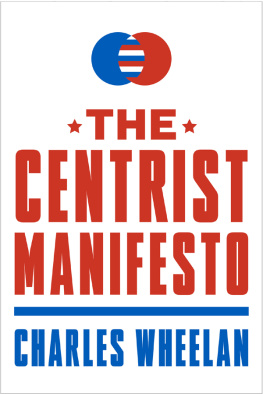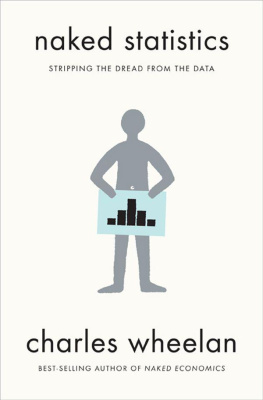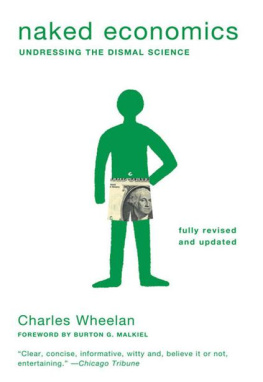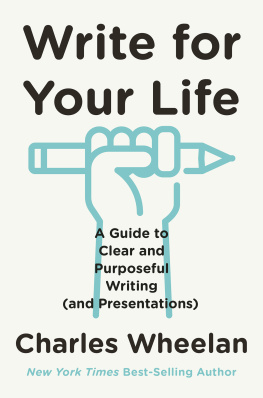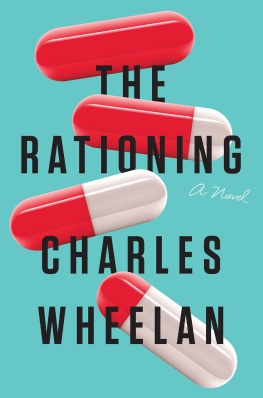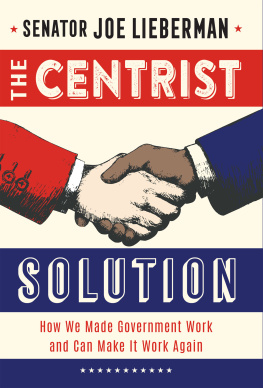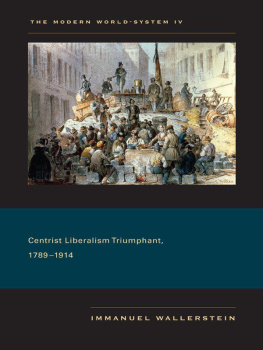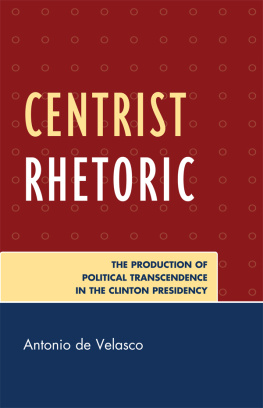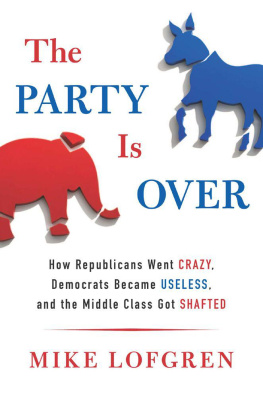
THE
CENTRIST
MANIFESTO
CHARLES WHEELAN

FOR SOPHIA
Contents
S OMETHING has to change.
Our country is on a dangerous trajectory. We are mired in serious policy challenges, in large part because the political process has moved beyond gridlock to complete paralysis.
Why are we paralyzed? Because our two political parties are increasingly dominated by their most vocal and extreme members, leaving little room for compromise. This would be a problem in any place at any time, but it is particularly frustrating in the United States right now because most American voters are not that extreme . The largest and fastest-growing bloc of American voters are independent. These are people without a party. Many were among the 41 percent of voters who described themselves as moderate in exit polls during the 2012 presidential election. Most important, these are American voters who would agree to sensible compromises on most issues of the day.
I am not suggesting that our most serious national challenges have simple and attractive solutions. They do not. But every major issue facing the United States can be reasonably confronted the way the rest of us approach challenges everywhere else in life: Identify the problem. Assess the causes. Evaluate the possible solutions. Recognize the legitimate differences of opinion. And then do something responsible. Our dysfunctional two-party system has lost its ability to do that.
The answer is the Centrist Partya third political party that empowers the middle. The sane, pragmatic majority in America must wrestle the steering wheel of the country away from the extremists on either side. This book is a plan for making it happen.
The purpose of the Centrist Party is not to make noise, like Ralph Nader and Pat Buchanan did when they ran for president. Nor is it a means for angry people to vent in a semi-organized way, like the Tea Party, which has no major policy accomplishments to speak of and has mostly served to fracture the Republican Party. ( New York Times columnist Tom Friedman has called it the Tea Kettle movement because it is mostly about letting off steam.) The Centrist Party will have a coherent ideology that draws from the best of both traditional political parties.
The Centrist electoral strategy revolves around the U.S. Senate. The party will focus on winning a handful of U.S. Senate seats in states where moderate candidates traditionally do well. With a mere four or five U.S. Senate seats, the Centrists can deny either traditional party a majority. At that point, the Centrists would be Americas power brokers. Nothing could happen without those swing votes. And when those swing votes represent sensible, moderate votersrather than the non-compromising extremists of the Left and Rightgood things can start happening again.
The Centrist Party will organize the vast American middle into a political movement built around sensible governance. It is more feasible than you might think.
The Challenges
If the Republicans and the Democrats were professional sports teams with disappointing records this season, we could simply stop paying attention and hope for better things next year. We do not have that luxury with governance. Anyone who reads a newspaper has a pretty good idea that things are moving in the wrong direction; here is a quick tour.
The economy is stagnant, with little promise of a rapid recovery. Millions are out of work, including a high proportion of recent college graduates carrying heavy debt loads. The mortgage meltdown and the subsequent financial crisis suggest that our complex economy needs more adult supervision.
Americas major entitlement programsSocial Security, Medicare, and Medicaidare unsustainably expensive. The longer we go without addressing the problem, the more dangerously indebted the nation will become. The only way to preserve Americas important safety net is to fix it.
Our health-care system is inefficient and expensivewith or without Obamacare. We spend significantly more on medical care than all other developing countries, but we get significantly less in terms of good health. Life expectancy in the United States is lower than the average for all other developed countriesand the gap is growing, not shrinking.
Our infrastructure is crumbling. The American Society of Civil Engineers has estimated that the United States needs to spend two trillion dollars just to fix the roads, bridges, and rail lines we havelet alone expand things that will be necessary to support the worlds most vibrant economy over the next century, such as airport capacity and high-speed rail.
We have done nothing to address climate change, other than cling to the delusional hope that it is not happening. This lack of action is particularly disturbing because there are ample other reasons besides global warming to wean us from our excessive dependence on fossil fuels. In fact, the climate change debate is a sad example of the triumph of a self-interested, faith-based argument over common sense and the scientific method.
Our human capitalthe reservoir of skills that we need to prosper in a modern economyis stagnant. The U.S. high school dropout rate is about the same as it was thirty years ago, despite the fact that dropping out of high school is essentially an economic death warrant in the twenty-first-century economy. The United States has always had far more college graduates than the rest of the world, going all the way back to 1862, when Abraham Lincoln and Congress set aside federal land to create the land grant universities. These are institutions like Rutgers, Penn State, Ohio State, the University of Illinois, Purdue, Kansas State, the University of Nebraska, and the University of California, among many others. By 2010, the United States had fallen from first in the world in the percentage of college graduates to twelfth.
Americas poverty rate is higher than it was in 1975. When it comes to infant mortality, the United States has the highest rate among the thirty-three advanced economies, according to the International Monetary Fund. Leave aside the mind-numbing statistics for a moment and just think about what that means. The richest society in the history of human civilization is failing at one of the most basic tasks in life: delivering healthy babies.
The United States currently spends more on defense than the countries with the next thirteen highest defense budgets combined . Yet we have done nothing in recent years to update and strengthen the international institutions that promote global peace, prosperity, and cooperationdespite the fact that many serious policy issues, from promoting trade to fighting terrorists and drug cartels, tend to be international in nature.
And we are not paying our bills. We have steadily accumulated debts to the rest of the world while making unrealistic promises to ourselves in the form of Social Security and Medicare. Both political parties talk a good game around fiscal discipline at the same time they are making the problem worse with unfunded tax cuts, new spending, or both. The growing debt is unfair to future generations and dangerously destabilizing to the financial system (which is not particularly stable to begin with).
More broadly, the American public has developed a remarkable inability to defer gratification. We seem unable or unwilling to make the short-term sacrifices necessary to build a more prosperous society; the political system panders to that shortsighted view. This is a country that was built on huge public and private investments that paid dividends, decade after decade, generation after generation: the land grant universities, the interstate highway system, the transcontinental railroad.
Next page
